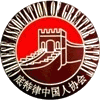Like other immigrants, Chinese often rely on family and community for support. Community resources include grocery stores that share language and culture, restaurants, pharmacies and acupuncturists.
In cities, most Chinese families are nuclear and focus on filial piety. Children are expected to help support their parents in the future.
Origins
During the 19th century there were three waves of Chinese immigration to America. Those who came during the first wave in the early 1820s worked at the California Gold Rush, built the Central Pacific Railroad and labored in western mines. They faced racial discrimination at all levels of white society. In response to a fear of the “yellow peril,” politicians and miners rallied against Chinese businesses.
Despite this, they retained many Chinese values and traditions. They also became attached to their country of origin. Dr. Sun Yat-sen stopped at Cleveland on his worldwide tour in 1911 and spoke at Old Stone Church and at the Golden Dragon Restaurant on Public Square. They formed Chinese societies to socialize and preserve their culture. These were called hui.
Customs
Chinese society reflects Confucian values that place strong emphasis on kinship and family relationships, a sense of obligation to others and the collective good. These values are reinforced by a culture of hierarchy and face that dictates respect for elders, teachers, and superiors.
People in China are highly interconnected, resulting in a great deal of social and business interaction. Patience and respect are critical in navigating these interactions, especially when dealing with older individuals or those in more traditional or rural areas.
China is a highly patriotic country and does not find jokes about its government or policies funny; this irreverence is seen as a derogatory gesture towards one’s own people. Household registration and minority policies continue to place restrictions on mobility, reducing social and cultural diversity in Chinese society (Heberer, 1989). The majority Han population is united under a single national identity (duo minzu guojia) that carries the implication of an ascribed, unchanging status as natives of their home towns.
Language
While the prevailing standard is Mandarin, other Chinese dialects are also spoken. They include Yue (Cantonese), Hokkien, Xiang and Hakka. The latter is characterized by unique phonetic characteristics that distinguish it from other dialects and other languages.
The characters that form Chinese are non-pictorial ideographs, meaning they represent words rather than objects. They can be simple or compound, and are arranged either in columns to be read from top to bottom or in rows to be read from left to right.
Many members of the Chinese community in America are bilingual, speaking their family’s dialect at home and Mandarin at work or school. Participation in a language learning community allows learners to develop a deeper connection to their heritage while developing valuable skills and building meaningful relationships.
Religion
Although the government in Beijing does not allow religious practice other than state-sanctioned forms, it grants greater leniency to Chinese Buddhism and Daoism than to foreign religions such as Christianity and Islam. But in recent years, adherents of these religious groups are facing increasing persecution as part of President Xi’s sinicization policies.
While a small share of Chinese adults describe themselves as believers in Confucianism, Taoism or folk religion, far more say they engage with beliefs and practices associated with these traditions. These include visiting a temple with a Buddhist connection, lighting incense at the graves of family members or praying for auspicious days using a calendar based on Yin-yang and the Five Elements theories.
Traditionally, men are primarily responsible for honoring their ancestors, but women are increasingly engaging in this ritual as well.
Food
In Chinese culture food reflects the balance of yin and yang. It is believed that the right kind of food can prevent illness and promote good health. Generally, Chinese people do not eat processed foods or ice cream.
They shop daily for fresh foods, which includes buying the freshest meats and in-season produce. They believe that the flavor, color, aroma and texture of a meal is important.
They eat three meals a day with the family, including breakfast, lunch and dinner. Unlike Western families, they usually sit around a table and eat their meals together. They also eat special foods for particular social events, such as moon cakes and dumplings for the Mid-autumn Festival and spring rolls for the Spring Festival. They hardly waste any part of an animal; for example, shark fin soup replenishes strength, crocodile meat strengthens the bronchia and monkey brains strengthen the mind.
